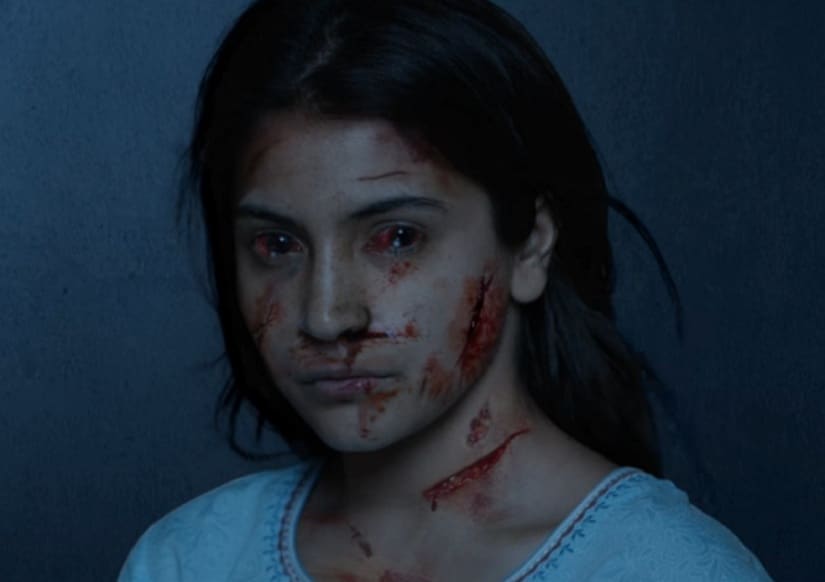Films attain significance due to a host of reasons. Some become important because of what they say, some thanks to the time they release in and some years, or even decades after they were first seen. Although Pari might not have fared as well as the expectations that its first look and trailer had raised, and despite the fact that it might not be recalled in a few years from now, it remains an important film. [caption id=“attachment_4296181” align=“alignnone” width=“825”]  Anushka Sharma in a still from Pari. YouTube[/caption] As a mainstream horror film, Pari has all the ingredients and the intentions to stand apart but neither that nor the fact that it features a female lead, Anushka Sharma, is why it needs to be looked at differently. It’s for an entirely different set of reasons, most of which do not appear on the screen in the way the Hindi film industry or the audiences are familiar with, that is the reason why the film as a whole is consequential. The third film to be produced by Anushka Sharma, Pari also establishes her brand both as an actor as well as a producer. While it is not uncommon for actors to become producers, the number of women stars indulging in film production has been conspicuously low but Sharma has changed this perception. Not only has she been one of the frontrunners amongst her generation when it comes to producing films for herself but also the alacrity and regularity of her output, three films in as many years has made her an exception. One would think that following a debut in a Yash Raj Films production, the going would have been easier but on the contrary, Sharma had to continuously struggle and much of what she fought were the same troubles that actresses across generations had to deal with. On his talk show, Karan Johar had mentioned he had no expectations from Anushka the first time he had met her. Johar also confessed that he had, in fact, even told Aditya Chopra that nothing is going to become of her and perhaps he was making a big mistake by casting Anushka as the female lead opposite Shah Rukh Khan in Rab Ne Bana Di Jodi (2008). Since her debut, Sharma featured in some of the biggest films and even with them turning out to be marquee projects — Patiala House (2011), Jab Tak Hai Jaan (2012), Matru ki Bijlee ka Mandola Bijlee Mandola (2013) and PK (2014) — it did precious little to tap into her potential. The streak that she displayed in Band Baaja Baaraat (2010) and parts of Badmaa$h Company (2010) lay unused as none of the so called big projects gave her something to bite into. Had Anushka Sharma not decided to turn producer with NH 10 (2015) the shadow of doubt on her capacity might have continued to linger on. Although one could not say that the roles that she did post-NH 10 were a result of her first production, there is a visible change in the kind of roles that came her along. Her characters in Dil Dhadakne Do (2015), Ae Dil Hai Mushkil (2016) and Sultan (2016) are far better etched than her earlier films and perhaps somewhere the confidence of being able to produce films for herself could have played a role. To produce three films — NH 10, Phillauri and Pari — in three years also reveal how Sharma has managed to strike a great balance. She can merrily do a Jab Harry Met Sejal, which keeps her in the A-league, and her own films that continue to present a different shade of her talent to the audiences. Similarly, Sharma’s ability to pick up subjects that do not limit her to portray the otherwise traditional parts offered to women in Hindi films is also a factor in the way she would now approach films. This is something that was never available to, or fully explored by a generation of women before her. The change in audience demography and the inclusion of new exhibition platforms such as online streaming also give more impetus to the kind of projects that Sharma produces such as Phillauri and Pari. In that aspect, it might not be totally incorrect to say that Anushka, the producer, had cracked the code. With Pari, Sharma has also picked up a genre that traditionally has not been able to offer great parts to women. Of course, a Raat or a Bhoot had very strong roles for women but horror in Hindi films has largely not been able to free itself from the trappings of the genre. Many critics agreed that Pari begins well and promises to be different but with carries on falling short with each passing minute. This is something that ails most horror films in India yet Sharma manages to make a strong comment with Pari. Besides the opportunity to pull all stops, it also saw Sharma make a statement of sorts by breaking some stereotypes associated with a leading lady’s looks . Pari comes at a time when the horror genre is undergoing a great transition. It got a great boost with Jordan Peele’s Oscar-winning _Get Out _ and one hopes that the genre gets a true makeover in Hindi films too. There is an urgent need to redefine the narrative, the visual palette and the general treatment of the Hindi film horror template and while Pari might not have been the one to infuse new blood in the genre, it would inspire storytellers to take on the challenge.
While Pari has not worked at the box office, it proved yet again how Anushka Sharma, the producer, is taking huge risks along with Anushka Sharma, the actor.
Advertisement
End of Article


)
)
)
)
)
)
)
)
)



